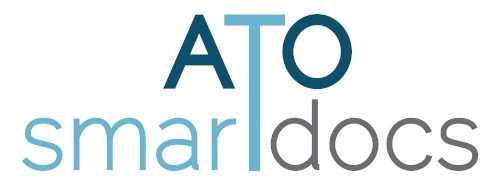This year’s Good Bad Ugly technology report revealed a concerning insight – fully utilising existing systems and technology was ranked as the number 1 biggest technology challenge facing accounting businesses this year.
This has significant implications for accountants in practice – given technology is a crucial enabler of us being able to deliver high quality work when we need to and is a key vehicle in determining how good an experience we deliver to our clients.
Automating and integrating systems and processes is one of the quickest ways your practice can achieve significant productivity and efficiency gains. However, it seems that many people get caught up in the complexity of processes and the promises of available software solutions.
The good news is that automations don’t need to be overly complex to be successful – in fact something as simple as an email diversion rule filtering off messages into which you’ve been CC’d or BCC’d to a separate folder can be a simple, highly effective solution to overcoming daily overwhelm and reduce distractions (provided you remind yourself to skim that sub folder!).
Of course, not all tasks lend themselves to automation – but there are plenty that do when it comes to practice management and compliance processing. Those tasks that are repetitive, are prone to data entry errors, and involve multiple people are typically ripe with automation potential.
What does that look like in practice? We’ve identified 3 key processes many of our clients have been able to automate thanks to a combination of handy integrations building off their existing systems, and new solutions that don’t require a paradigm shifting change in the way you work to be successful.
Practice Area: Marketing
While fancy creative, colourful social media banners, and carefully curated content often lends itself to a human touch – there are no shortage of automation opportunities to streamline your marketing administration. If you’re using an email marketing platform such as MailChimp, set up an automated 3-part email campaign to onboard new clients, introducing them to your practice and team, and sharing recent blog articles or resources they might be interested in. Emails can be heavily personalised using stored data, and depending on where your client data is housed, you may even be able to automate the updating of your email lists using a handy tool like Zapier.
Time saved: One hour per new client
Turbocharging tip – Connect the dots: Zapier is a fantastic, free online tool that allows you to integrate a whole host of online systems to automate manual tasks EG create new email subscribers from an online survey response, or autoshare your latest email campaign to your LinkedIn profile.
Practice Area: Sales
We all love when a new client comes on board, but it’s the extensive and time-consuming processes beforehand that can really weigh you down when responsiveness counts. Thankfully drafting, formatting, and generating proposals, fee estimates, and engagement letters can now be all but fully automated with a plethora of options available for all technology levels. Many practice management platforms allow you to merge standard letter templates using data within your existing system, while solutions like Practice Ignition or Proposify can be used to generate, send, and follow up proposals with little fiddling or formatting.
Time saved: 4 hours per client
Turbocharging tip – Share the wins with your team: If you use a cloud solution to send and sign off your proposals, you may be able to automate alerts to your internal discussion board (you have one of those right) when proposals get signed off – keeping your team up to date with the good things happening.
Practice area: Compliance
Once your new clients are in the door, you need to deliver the work efficiently, and effectively. With new legislative changes coming through thick and fast, it can be difficult to stay on top of everything – let alone ensuring your internal systems and documents are correct and updated in a timely manner. Using pre-built and templated workpapers can be a great solution for firms looking to reduce the administrative burden of maintaining and updating rafts of documents. Beware though: many off the shelf templates are simply a snapshot of compliance requirements at a single point in time. Solutions like Smart Workpapers are updated by qualified CAs and CPAs as soon as legislative changes happen, and can be combined with your own templates to improve accuracy and consistency across your data.
Capacity created: 60% extra reviewing capacity & 35% reduction in rework annually
Turbocharging tip – Less data entry and more data-mining: Integrate Smart Workpapers with Reportance to build end-to-end financial reports in minutes using customisable templates.
There really are no shortage of processes within our practices that lend themselves to automation, but not all will be as successful as each other. Here are our top 3 tips to ensure your implementation is a success:
- Before embarking, ensure you have clarity over the process and a detailed plan of attack. Depending on the complexity of the process you’re automating, get key stakeholders around the table to map out what the process currently looks like and assign key actions to people with specific deadlines. Get the project team back together at crucial points in the implementation.
- Identify key success factors. You don’t run a race without knowing where the finish line is, and the same should be true for implementing a process improvement. Take the time early on to define what success of the project looks like, regardless of how big or small. Larger projects can easily snowball in complexity, so make sure you regularly circle back to ensure your improvement is just that, an improvement.
- Get your team on board. For larger efficiency projects, it’s crucial that you have buy in across the team that the project will impact. Nominate an internal leader (who has management support) and brief the team on the idea, the plan of attack, and the vision of success. You might have noticed that those of us in accounting can be very detailed and plan oriented – so the more information you can provide, including how it impacts team members individually, the better.
Looking for other automation opportunities that leverage your existing processes and systems? Business Fitness can help shape-up your practice’s productivity – register for an online discovery to find out how tools like Smart Workpapers could help you. Want more technology insights? Download a free summary of the GBU Technology report here.
The 2019 Good Bad Ugly Survey is now open. Click here to participate now. Survey will be open until 6th September 2019.
Brad Geelan | Business Fitness
- Adapting to the change that is here now - 13 November 2021
- Tax planning talking points: Have you added these changes to your tax planning checklists yet? - 4 May 2021
- Let’s talk about your firm’s use of technology in 2021 - 21 April 2021



















